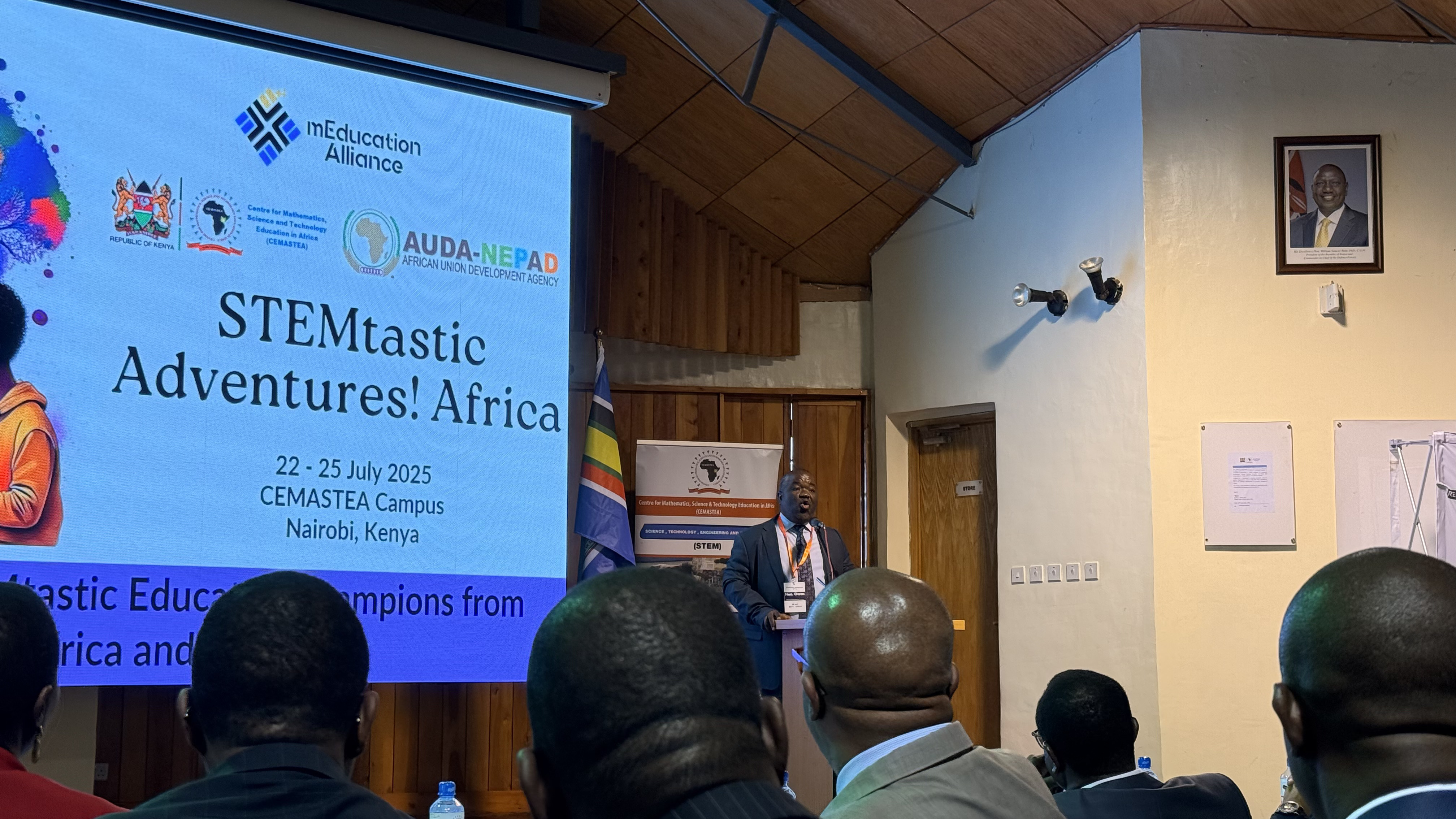
From classroom innovations to continental policy dialogues, STEMtastic Adventures! Africa 2025, organized by mEducation Alliance, CEMASTEA, and AUDA-NEPAD, brought together educators, innovators, and government leaders in a dynamic four-day symposium committed to transforming STEM education across Africa.
Those present during the opening ceremony included education ministers and policymakers representing Kenya, Malawi, Eswatini, and The Gambia. Kenya’s Cabinet Secretary for Education, Julius Migos, emphasized Africa’s responsibility to ensure STEM becomes a national and international driver of innovation.“When learners are exposed to relatable models, they’ll see STEM as a possibility to pursue endless opportunities. Africa cannot afford to leave anyone behind.”
During the event held at the CEMASTEA Campus in Nairobi from 22-25 July, Malawi’s Minister of Education, Madalitso Wirima Kambauwa, shared the country's national commitment to equipping learners with technological devices, training teachers, and building digital infrastructure, encouraging participants towards pan-African collaboration in using technology as a bridge, not a barrier.
Accessibility in action – inclusive robotics & learning tools
The importance of inclusive innovation and accessible education was highlighted by eKitabu’s presentation on scaling sign-language-rich learning using accessible learning materials. In partnership with ChipuRobo Centre, it showcased a locally made, AI-ready robotics kit tailored for Kenya’s CBC curriculum, promoting equal access to STEM for students with and without disabilities.
This inclusive approach is not just a project, it’s a movement to make STEM education representative, localized, and empowering for all learners.
Thought leadership – EdTech vision & strategic dialogue
Two standout presentations brought the bigger picture into focus: one by Dr Barbara Glover and the other by Dr John Kimotho. Dr Glover from AUDA-NEPAD unveiled the EdTech 2030 Vision & Plan, a continental strategy to harness education technology for inclusive learning, rural innovation, and economic resilience. She emphasized the need to co-create solutions and avoid policies that reinforce inequality.
On his part, Dr John Kimotho, an AUDA-NEPAD Consultant, called for investment in resilient education systems, especially for marginalized communities. He also asked the thought-provoking question: "How can technology work for the marginalized?"
Bridging policy and practice
A key focus involved aligning national policies with on-the-ground implementation: Namibia was cited for allocating 8 per cent of its national budget to education, while many African nations still rely on reactive, short-term policy responses.
The consensus? Foresight and action plans are needed to translate STEM policy into measurable outcomes.
Special presentations included ICEVI Africa and Thika High School for the Blind, which spoke about supporting learners with disabilities, emphasizing the importance of inclusive pedagogy.
Factors affecting learners with hearing impairments were also highlighted, with the main challenge being the negative attitude of teachers toward these learners.
Joan Mwachi, a consultant with EdTech East Africa, added, “Learners have to learn sign language first before learning how to read and write, making it a double task. Upcoming innovations should find a solution to address this.”
Future goals
ProjeKt Inspire (Tanzania) gave a dynamic demo of their STEM resources, ending with a literal fire-in-the-arm moment, while Dr Kimotho led appreciation for contributors to RESPECT, an open-source digital library for EdTech apps.
Special recognition was accorded mEducation Alliance, AUDA-NEPAD, and CEMASTEA for their leadership and coordination throughout the event.
The final announcement? STEMtastic Adventures Africa 2026 will be held in Ghana!
Final reflections
STEMtastic Adventures Africa 2025 proved that when governments, educators, and innovators work together, inclusive, equitable, and localized STEM education is not just a vision — it's a reality in the making.
As we look to 2026, the call is clear: let’s co-create solutions that leave no learner behind.